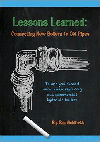PVF Forum: Reducing Operational Costs - A Primer For PVF Distributors
Order writing: The format and sequence of writing sales orders influence the picking sequence, which directly affects the time spent in filling orders, as well as time spent checking and packing assembled orders. Writing sales orders by commodity and by size in increasing sequence contributes to simplified order filling and checking.
Sales orders should be written in the sequence above, rather than simply following the sequence of customer purchase orders, which may or may not be in convenient picking order. Sometimes customer POs are copies of engineering take-offs of construction drawings, and not in any logical sequence.
Warehouse order filling: The method for stocking inventory also influences the picking sequence by order pickers and has a direct effect on the time spent in filling orders. Products can be stocked by commodity, grade of material, pressure class, black or galvanized, and size.
Efficient warehouse layout assigns the most accessible levels of shelves or bins to fast moving items, and less accessible locations for slower movers. Many computer programs used for order entry expedite order picking by automatically printing bin or shelf locations on the order.
Carton labels: Carton labels in large, easily readable letters, and utilizing color codes, speed the picking process as well as reduce picking errors. Example: black fitting labels with black border and galvanized fitting labels with silver borders; different grades of stainless have identifying colors, such as red for Type 304, Blue for Type 316. Some progressive distributors use bar coding for rapid identification.
Case quantities: Ordering in specified standard quantities per carton or case can preclude individual counting. Establishing "case quantity" restrictions or case discount incentives for customers can greatly reduce order picking time.
Less-than-carton or -case quantities should be placed in plastic bags and quantity marked on the outside with felt tip pens. This will reduce the checking time for the distributor, as well as benefit the customer's receiving clerk.
Warehouse equipment: Providing efficient equipment is mandatory for reducing time spent in order picking operations. While a conventional fork lift is efficient for moving pallets, specialized order picking lifts enable one to move to selected bin locations, then lift the operator to the desired level to easily load the selected items onto the pallet. Skilled operators acquire the ability to raise or lower the platforms as they are moving to new locations, thus reducing overall picking time.
Packing/shipping: Small and medium orders should be packed in appropriate shipping boxes (usually corrugated cardboard). Large orders, particularly those containing a number of similar size cartons, can be assembled on a shipping pallet and contained by plastic wrap. This method is cost-effective not only due to eliminating expensive large boxes, but also reducing operating labor. Customer receiving clerks can readily identify the contents by reading the carton labels through the clear plastic wrap.
Shipping boxes: Shipping box dimensions must be coordinated with the sizes of cartons or cases used by manufacturers. Not only are boxes rated by weight capacity, but selection must be followed to conform to the recommended lifting limits for workers. Require warehouse workers to wear protective lumbar support belts in order to reduce back injuries and rein in workers compensation insurance expense.
Personnel training: Product knowledge should not be limited to sales personnel. Simplified product training for warehouse workers on materials, pressures and applications will give them an understanding of the differences in the products they are picking, and why it is important to be exact.
Giving warehouse personnel minimal training in quality assurance inspection will make them conscious of acceptable quality. It is amazing how sensitive the human eye is. Once they know what to look for, warehouse workers can often spot a discrepant part as they are picking and packing orders.
Utilize experts: There is no "one size fits all" approach in applying the operational improvements cited here. They must be tailored to fit each company.
Most manufacturers of warehouse equipment and vendors of boxes and shipping cartons have experts on their staff to advise purchasers of the most efficient products and methods for their needs. Also, there are management consultants with broad experience in warehouse layout and handling procedures that will work with you to gain long-term savings.
Inefficient practices that could be absorbed in earlier times are now inflating operating costs beyond that which most PVF distributors can bear in today's tough market. Use this basic primer to help trim some fat out of your operations.
Looking for a reprint of this article?
From high-res PDFs to custom plaques, order your copy today!





